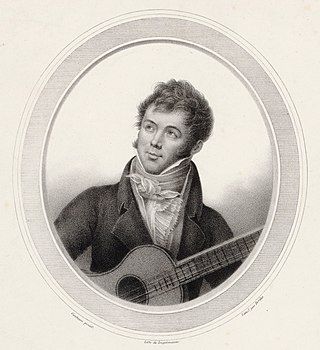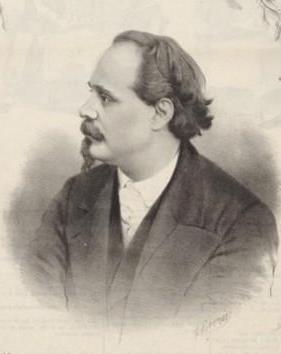Iphigénie en Tauride is a 1779 opera by Christoph Willibald Gluck in four acts. It was his fifth opera for the French stage. The libretto was written by Nicolas-François Guillard.

Sly, ovvero La leggenda del dormiente risvegliato is an opera in three acts by Ermanno Wolf-Ferrari to an Italian libretto by Giovacchino Forzano, based on the Induction to Shakespeare's The Taming of the Shrew. It was premiered at La Scala in Milan in 1927.

Anastasio Martín Ignacio Vicente Tadeo Francisco Pellegrin Martín y Soler was a Spanish composer of opera and ballet. Although relatively obscure now, in his own day he was compared favorably with his contemporary and admirer, Wolfgang Amadeus Mozart, as a composer of opera buffa. In his time he was called "Martini lo spagnuolo" ; in modern times, he has been called "the Valencian Mozart". He was known primarily for his melodious Italian comic operas and his work with Lorenzo Da Ponte in the late 18th century, as well as the melody from Una cosa rara quoted in the dining scene of Mozart's Don Giovanni.

Lorenzo Da Ponte was a Venetian, later American, opera librettist, poet and Roman Catholic priest. He wrote the libretti for 28 operas by 11 composers, including three of Mozart's most celebrated operas: The Marriage of Figaro (1786), Don Giovanni (1787), and Così fan tutte (1790).

Tarare is an opéra composed by Antonio Salieri to a French libretto by Pierre Beaumarchais. It was first performed by the Paris Opera at the Théâtre de la Porte Saint-Martin on 8 June 1787. Salieri also reworked the material into an Italian version retitled Axur, re d'Ormus with libretto by Lorenzo Da Ponte, which opened in Vienna in January 1788.

Saffo is an opera in three acts by Giovanni Pacini set to a libretto by Salvadore Cammarano, which was based on a play by Franz Grillparzer, after the legend of the ancient Greek poet Sappho.

Gli equivoci, is an Italian opera buffa by Stephen Storace to a libretto by Lorenzo Da Ponte, based on Shakespeare's The Comedy of Errors.

Una cosa rara, ossia Bellezza ed onestà is an opera by the composer Vicente Martín y Soler. It takes the form of a dramma giocoso in two acts. The libretto, by Lorenzo Da Ponte, is based on the play La luna de la sierra by Luis Vélez de Guevara. The opera was first performed at the Burgtheater, Vienna, on 17 November 1786. It was a huge success and was shown 78 times. Mozart quotes a melody from this opera, "O quanto un sì bel giubilo", in the orchestral accompaniment to the trio "Già la mensa è preparata" of the finale of Don Giovanni.

Il Telemaco nell'isola di Calipso is an opera by composer Fernando Sor. The libretto was by Carlo Sigismondo Capece. It was first produced in Barcelona at the Teatro de la San Cruz on 25 August 1797. It was revived in the same city on 18 May 1798.

Lina Bruna Rasa was an Italian operatic dramatic soprano. She was particularly noted for her performances in the verismo repertoire and was a favourite of Pietro Mascagni who considered her the ideal Santuzza. Bruna Rasa created the roles of Atte in Mascagni's Nerone, Cecilia Sagredo in Franco Vittadini's La Sagredo and Saint Clare in Licinio Refice's 1926 oratorio, Trittico Francescano. She also sang the role of Tsaritsa Militrisa in the Italian premiere of Nikolai Rimsky-Korsakov's The Tale of Tsar Saltan.

Brigida Banti, best known by her husband's surname and her stage-name, as Brigida Banti, was an Italian soprano.

Il burbero di buon cuore is an opera dramma giocoso in two acts by Vicente Martín y Soler. The Italian libretto by Lorenzo Da Ponte is based on the French comedy Le bourru bienfaisant by Carlo Goldoni.

Giuseppina Pasqua was an Italian opera singer who performed throughout Italy and Europe from the late 1860s through the early 1900s. She began her career as a soprano when she was only 13, but later retrained her voice as a mezzo-soprano. She sang in several world premieres, but is most remembered today for having created the role of Mistress Quickly in Giuseppe Verdi's Falstaff. The composer wrote the role specifically for her and dedicated the act 2 aria "Giunta all' albergo" to Pasqua. She was married to the baritone Astorre Giacomelli.

Vincenzo Calvesi was an Italian operatic tenor and impresario. A skillful lyric tenor, he began his career performing in opera houses in Italy during the 1770s. He was active in Dresden in 1782 to 1783 and then spent most of his time performing in Vienna from 1785 to 1794. He is best remembered today for creating the role of Ferrando in the world premiere of Wolfgang Amadeus Mozart's Così fan tutte in 1790. That same year the Viennese publication Grundsätze zur Theaterkritik described him as "one of the best tenors from Italy…with a voice naturally sweet, pleasant and sonorous." He was later active in Rome as an impresario up until 1811.
Il trionfo di Clelia, Wq. 31, is an opera composed by Christoph Willibald Gluck. It takes the form of a dramma per musica in three acts. The Italian-language libretto by Pietro Metastasio is based on several semi-legendary narratives concerning the founding of the Roman Republic. The opera premiered on 14 May 1763 at the Teatro Comunale di Bologna. Although rarely performed since then, it was revived in London in 2012 at the Royal Opera House's Linbury Studio.

Mario Tiberini was an Italian tenor who sang leading roles in the opera houses of Europe and the Americas in a career spanning 25 years. Known for his advanced singing technique and dramatic ability, he sang the role of Alvaro in the premiere of the revised version of Verdi's La forza del destino and created several roles in operas by lesser-known composers, including the title role in Faccio's Amleto.

Angiolina Ortolani-Tiberini was an Italian soprano who sang many leading roles in European opera houses during a career spanning over twenty years. After their marriage in 1858, her career was closely entwined with that of her husband, the tenor Mario Tiberini, with the couple often appearing together on stage. Amongst the roles she created was Ofelia in Franco Faccio's Amleto.

La capricciosa corretta is a comic opera in two acts composed by Vicente Martín y Soler. The libretto is by Lorenzo Da Ponte and has a plot which has a slight similarity to William Shakespeare's play The Taming of the Shrew, but is not based on it. The story takes place over a 24-hour period and examines the marriage of an older man to his vain and capricious second wife whose antics make her husband, stepchildren, and servants miserable until she is finally brought to heel through the machinations of her husband's major domo. The opera premiered under the title La scuola dei maritati at the King's Theatre in London on 27 January 1795 to considerable success. It was later performed throughout Europe under the alternative titles Gli sposi in contrasto, La moglie corretta, and La capricciosa corretta—the title used by Da Ponte and the one by which it is known today.

Concepció Bordalba i Simón was a Catalan operatic soprano who performed under the name Concetta Bordalba outside her native Spain. She spent most of her career in Italy or with touring Italian opera companies and was particularly known for her performances as Elsa in Wagner's Lohengrin and Margherita in Boito's Mefistofele.














